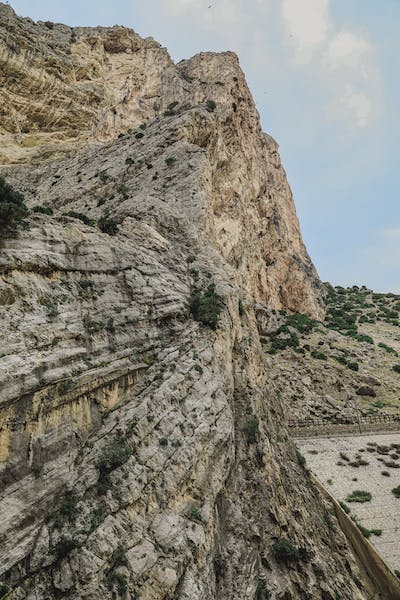Young Researchers And The Mountain Chicken Frog Endangered

The Mountain chicken
The mountain chicken frog is a critically endangered species of frog that is native to the Caribbean islands of Dominica and Montserrat. The population declined by at least 80% from 1995 to 2004, with further significant declines later. A tiny wild population remains on Dominica where there are efforts to preserve it, but few or none survive in the wild on Montserrat and its survival now relies on a captive breeding project involving several zoos.
The mountain chicken frog is threatened by a number of factors, including:
- Habitat loss and fragmentation: The mountain chicken frog is found in a variety of habitats, including rainforest, montane forest, and swampland. However, these habitats are being destroyed by human activities, such as deforestation and development.
- Invasive species: Invasive species, such as the giant African snail, can compete with the mountain chicken frog for food and habitat.
- Overexploitation: The mountain chicken frog was once a popular food source, and it was hunted to extinction on some islands.
- Disease: The mountain chicken frog is susceptible to a number of diseases, including chytridiomycosis, a fungal infection that can kill frogs.
Conservation efforts are underway to save the mountain chicken frog, but the species remains critically endangered. These efforts include:
- Captive breeding: Mountains chicken frogs are being bred in captivity in an effort to increase their numbers.
- Habitat restoration: Efforts are being made to restore the mountains chicken frog’s habitat.
- Education: People are being educated about the importance of the mountains chicken frog and the threats it faces.
The mountain chicken frog is a unique and important species, and it is vital that we take action to save it from extinction.

How many mountain chicken frogs are left?
The number of mountains chicken frogs left in the wild is unknown, but it is estimated to be fewer than 100 individuals. The species is critically endangered and is threatened by a number of factors, including habitat loss, invasive species, overexploitation, and disease. Conservation efforts are underway to save the mountains chicken frog, but the species remains at risk of extinction.
Here are some additional details about the threats facing mountains chicken frogs:
- Habitat loss: Mountains chicken frogs are found in a variety of habitats, including rainforest, montane forest, and swampland. However, these habitats are being destroyed by human activities, such as deforestation and development.
- Invasive species: Invasive species, such as the giant African snail, can compete with mountains chicken frogs for food and habitat.
- Overexploitation: The mountains chicken frog was once a popular food source, and it was hunted to extinction on some islands.
- Disease: Mountains chicken frogs are susceptible to a number of diseases, including chytridiomycosis, a fungal infection that can kill frogs.
Conservation efforts to save mountains chicken frogs include:
- Captive breeding: Mountains chicken frogs are being bred in captivity in an effort to increase their numbers.
- Habitat restoration: Efforts are being made to restore the mountains chicken frog’s habitat.
- Education: People are being educated about the importance of the mountains chicken frog and the threats it faces.
The mountains chicken frog is a unique and important species, and it is vital that we take action to save it from extinction.
Are mountains chickens poisonous?
No, mountains chickens are not poisonous. They are a popular food source in some parts of the Caribbean, and they are not known to cause any harm to humans. However, it is important to note that mountains chickens can carry salmonella, so it is important to cook them thoroughly before eating them.
Are Mountains chickens found in Africa too?
No, mountains chickens are not found in Africa. They are a critically endangered species of frog that is native to the Caribbean islands of Dominica and Montserrat. They are not found anywhere else in the world.
The world region that hosts the most mountain chickens is Southeast Asia. Mountain chickens are a type of pheasant that are found in the mountains of Southeast Asia, including Vietnam, Laos, Cambodia, Thailand, and Myanmar. They are known for their ability to live in high altitudes and their colorful plumage.
Here are some of the countries in Southeast Asia that have mountain chickens:
- Vietnam: The Annamite Mountains in Vietnam are home to several species of mountain chickens, including the Annamite pheasant, the Siamese fireback, and the Vietnamese argus.
- Laos: The Annamite Mountains in Laos are also home to several species of mountain chickens, including the white-winged pheasant, the silver pheasant, and the green peafowl.
- Cambodia: The Cardamom Mountains in Cambodia are home to the Cambodian fireback, a critically endangered species of mountain chicken.
- Thailand: The Doi Suthep–Pui National Park in Thailand is home to the Siamese fireback, the silver pheasant, and the green peafowl.
- Myanmar: The Shan Hills in Myanmar are home to several species of mountain chickens, including the Burmese peafowl, the mountain pheasant, and the green peafowl.
Which World Countries Have Largest Number of Wild Animals?
The countries with the largest number of wild animals are:
- Indonesia: Indonesia is home to the most mammal species of any country, with over 570 species. It also has a wide variety of other wildlife, including over 1,700 bird species, over 1,500 reptile species, and over 270 amphibian species.
- Brazil: Brazil is home to the most species of freshwater fish in the world, with over 3,000 species. It also has a wide variety of other wildlife, including over 500 mammal species, over 1,800 bird species, and over 700 reptile species.
- Russia: Russia is home to the largest land area of any country in the world, and this includes a wide variety of habitats, from the Arctic tundra to the tropical forests of Siberia. As a result, Russia is home to a diverse range of wildlife, including over 1,700 mammal species, over 700 bird species, and over 400 reptile species.
- China: China is home to a wide variety of habitats, from the high mountains of the Himalayas to the tropical forests of southern China. This diversity of habitats supports a diverse range of wildlife, including over 500 mammal species, over 1,400 bird species, and over 400 reptile species.
- India: India is home to a wide variety of habitats, from the snow-capped mountains of the Himalayas to the tropical forests of the Western Ghats. This diversity of habitats supports a diverse range of wildlife, including over 400 mammal species, over 1,200 bird species, and over 400 reptile species.
These are just a few of the countries with the largest number of wild animals. There are many other countries that are home to a diverse range of wildlife, and it is important to protect these animals and their habitats.
Here are some of the threats to wild animals:
- Habitat loss: The destruction of natural habitats, such as forests and wetlands, is the biggest threat to wild animals. This is due to human activities such as deforestation, agriculture, and mining.
- Hunting and poaching: Hunting and poaching for food, trophies, and traditional medicine are also major threats to wild animals.
- Climate change: Climate change is also a threat to wild animals, as it is causing changes in their habitats and food sources.
- Disease: Diseases can also spread rapidly among wild animals, and this can lead to population declines.
We can all do our part to protect wild animals by:
- Reducing our consumption of animal products
- Supporting sustainable agriculture and forestry practices
- Avoiding buying products that contain endangered species
- Donating to organizations that are working to protect wild animals
- Educating others about the importance of wildlife conservation
By working together, we can help to protect wild animals and their habitats for future generations. Mountain chickens are an important part of the ecosystem in Southeast Asia. They help to control populations of insects and other small animals, and they are also a source of food for local people. However, mountain chickens are threatened by habitat loss and hunting. In order to protect these birds, it is important to conserve their habitat and to raise awareness about the threats they face.

2 thoughts on “Young Researchers Want To Know Why Is The Mountain Chicken Frog Endangered”